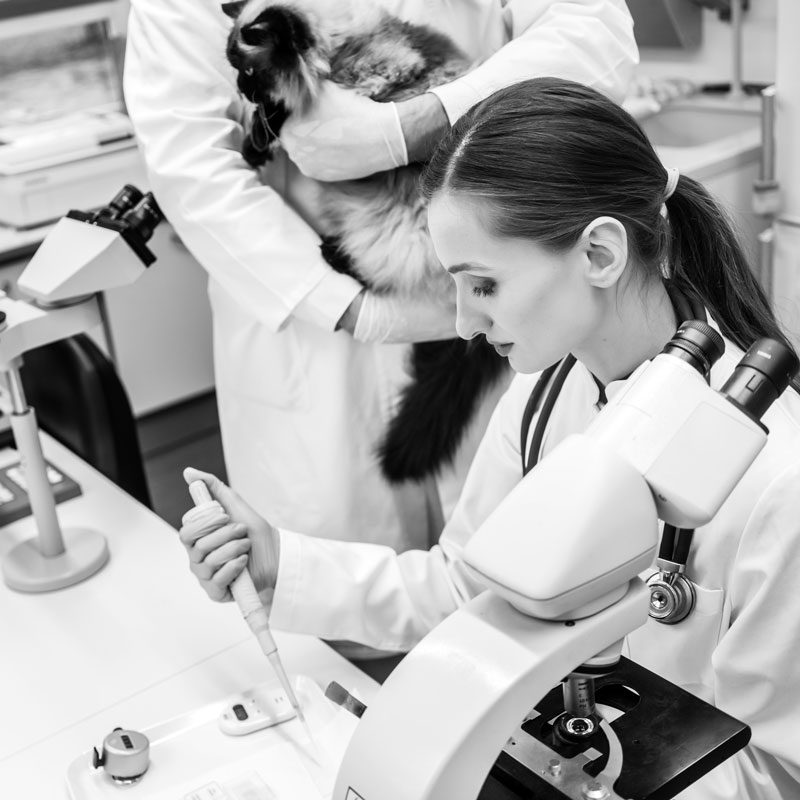
Maura Thomas – Empowered Productivity™ System
February 16, 2021
Steve Appelbaum, Creator of Animal Behavior College
February 23, 2021
 If you read our last book review post, you’ll remember one of my favorite books was Our Symphony with Animals by Aysha Akhtar. The book came out in 2019 and since then, Dr. Akhtar has been busy advocating for animals. She founded the Center for Contemporary Sciences, a foundation that is working to shift away from animal testing in the sciences in favor of human-specific research.
If you read our last book review post, you’ll remember one of my favorite books was Our Symphony with Animals by Aysha Akhtar. The book came out in 2019 and since then, Dr. Akhtar has been busy advocating for animals. She founded the Center for Contemporary Sciences, a foundation that is working to shift away from animal testing in the sciences in favor of human-specific research.
We all know animal testing happens—but we often prefer not to think about it, and we may not be sure what we can do about it. With the Center for Contemporary Sciences, Dr. Akhtar is working to develop alternatives. This is a subject Dr. Akhtar touches on in Our Symphony with Animals and one particular scene she describes struck me deeply. (Note: The paragraph below may be disturbing for some readers; feel free to skip to the following paragraph if you prefer.)
Dr. Akhtar talks about a neuroscience conference where a presenter was discussing spinal cord injuries. The presenter showed a video of an experiment he had conducted with a cat where he had crushed the cat’s spinal cord and then recorded her movements on a treadmill while electrodes implanted in her brain recorded her brain activity. Dr. Akhtar describes the cat dragging her paralyzed back legs and how she kept falling off the treadmill only to be put back on by the researcher. Then the moment that is most poignant: one of the times the researcher puts the cat back onto the treadmill, the cat rubs her head against his hand. “Even at the peak of her suffering, the cat was seeking comfort from the very hand that caused it” (174), Ahktar says of the orange tabby’s action.
I’m a vegetarian and I try to buy cruelty-free makeup and personal care products, but animal testing is used for a surprising array of products (and not just beauty and personal care products), and of course for developing drugs, vaccines, and other disease treatments. It’s hard to avoid using products that are tested on animals, and at the moment, drugs and vaccines we need don’t have an alternative method of development.
Even the COVID-19 vaccines from Pfizer and Moderna were both tested on mice and macaques, though there has been an effort to discredit both vaccines by claiming they skipped animal trials. Though I want to see the end of animal testing soon, of course we all still must get the COVID-19 vaccine in order to help end this pandemic.
However, according to the Food and Drug Administration, more than 90% of new drugs fail in human trials, even though they did well in animal trials. We’ve been able to cure cancer in mice, but it hasn’t worked for humans. More than 85 vaccines for HIV/AIDS have worked for nonhuman primates, and not one has worked for humans. Dr. Ahktar even suggests in her book that jobs that necessitate causing harm to animals in slaughter houses, animal testing facilities, or factory farms can cause mental harm to humans.
So if we think animal testing is cuel, harmful to both humans and animals, and it isn’t really helping us study human diseases, why are we still doing it? According to the Stanford School of Medicine, “Animals are biologically very similar to humans. In fact, mice share more than 98% DNA with us! Animals are susceptible to many of the same health problems as humans—cancer, diabetes, heart disease, etc. With a shorter life cycle than humans, animal models can be studied throughout their whole life span and across several generations, a critical element in understanding how a disease processes and how it interacts with a whole, living biological system.”
Stanford also claims to strive for the most ethical treatment possible for their animal subjects. Stanford is correct that animal models probably are the best way to study living biological systems at the moment, and we must admit that testing on animals before moving to human trials has resulted in many fewer deaths of humans in Phase 1 clinical trials. So animal testing has helped protect humans, but Dr. Akhtar and others (for example, Katja Guenther, author of The Lives and Deaths of Shelter Animals) question the idea of human supremacy. In other words, why do humans believe that our lives are worth more than animal lives?
Presently in science, animal testing—at least for drugs, vaccines, and other disease treatments— probably is still necessary, but the Center for Contemporary Sciences aims to end animal testing and replace it with human biology-based methods, including advanced computational models, human volunteers, and human cell based studies.
It can be disheartening to read about animal testing and know that there isn’t a lot the average person can do to avoid it. We all need vaccines, drugs, and other medical treatments. The easiest way I’ve found to show my dissatisfaction with animal testing is to buy cruelty-free products whenever possible—something you may wish to explore as well.
At this time, we don’t have a perfect alternative for animal testing, but the work the Center for Contemporary Sciences is doing is necessary for finding alternatives that both end the cruelty of animal testing and contribute to better treatments, therapies, and cures for humans.
 Originally from Colorado, Krista Beucler received a Bachelor of Arts in creative writing at the University of Mary Washington (UMW) in Virginia. She was the editor-in-chief for Issue 7.2 of the Rappahannock Review, the literary journal published by UMW. Krista’s creative work has been published in From Whispers to Roars literary magazine. She is spending COVID-19 at home with her cats.
Originally from Colorado, Krista Beucler received a Bachelor of Arts in creative writing at the University of Mary Washington (UMW) in Virginia. She was the editor-in-chief for Issue 7.2 of the Rappahannock Review, the literary journal published by UMW. Krista’s creative work has been published in From Whispers to Roars literary magazine. She is spending COVID-19 at home with her cats.




